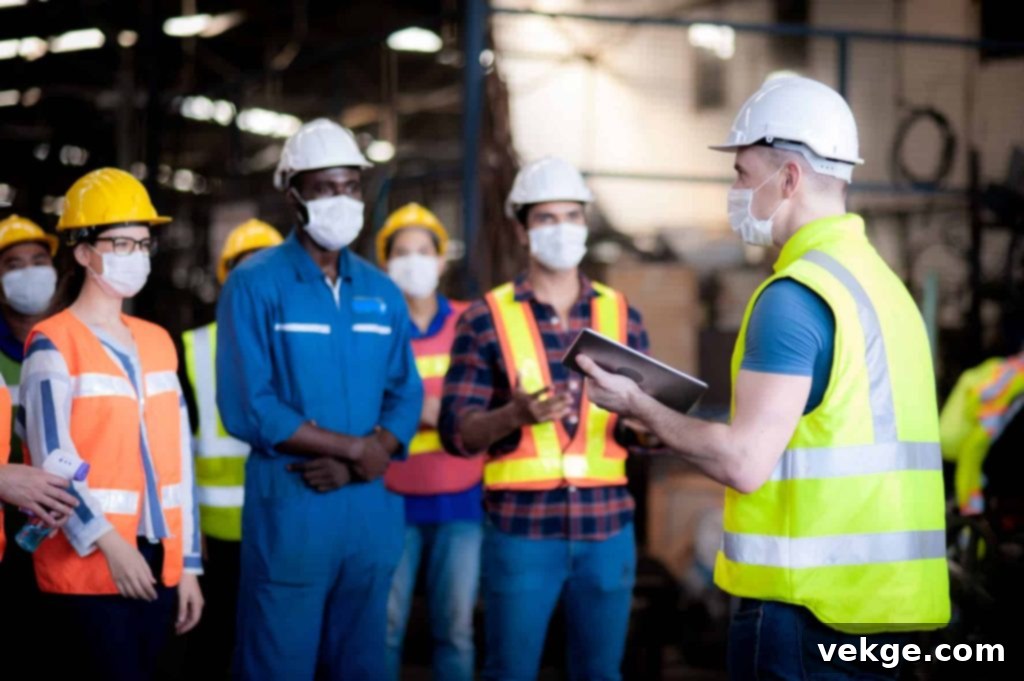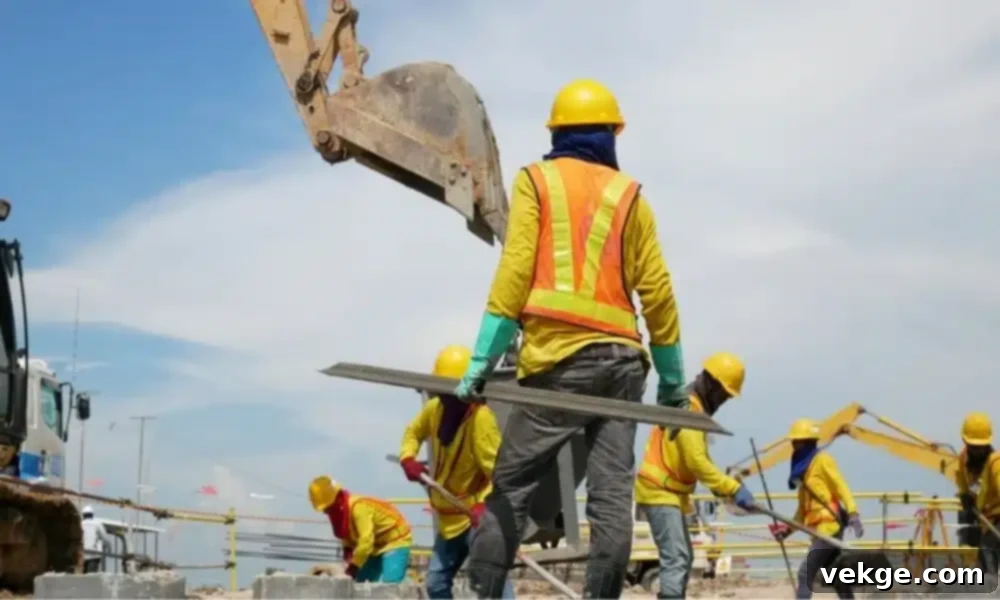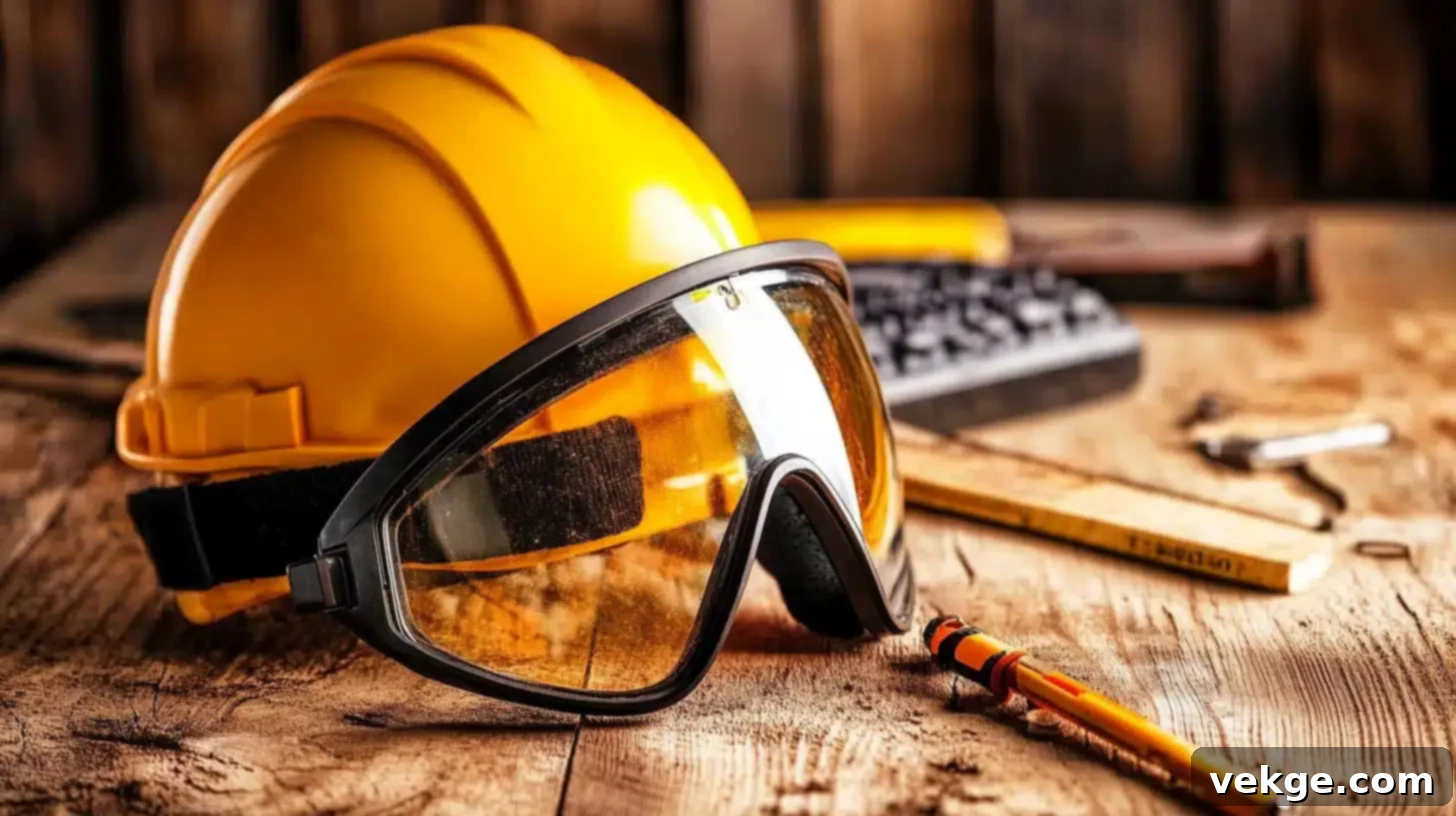The Ultimate Guide to Construction Site Safety: Preventing Accidents and Protecting Workers
Construction sites are dynamic environments, bustling with activity, heavy machinery, and ambitious projects. Yet, beneath the impressive facade of progress lies a stark reality: the inherent risks that can tragically turn a workplace into a scene of distress. Accident figures from construction sites paint a grim picture year after year, with thousands of workers suffering injuries – from minor bumps and scrapes to, in the most devastating cases, fatal incidents. This sobering truth underscores a fundamental principle: safety is not merely a compliance checkbox but the absolute cornerstone of any successful construction operation.
The very nature of construction work, involving high-risk activities such as working at elevated heights, operating powerful heavy machinery, handling hazardous materials, and navigating complex structural elements, elevates the stakes significantly. Neglecting stringent safety protocols in such environments can lead to catastrophic consequences, not only for the individuals involved but also for project timelines, budgets, and company reputations. Alarmingly, statistics reveal that one in five private industry worker fatalities occur within the construction sector, issuing a deafening call for dramatically beefed-up safety measures and an unwavering commitment to worker protection.
Effective construction site safety cannot be left to chance or treated as an afterthought. Instead, it demands a deliberate, multifaceted approach that seamlessly integrates proactive preventative steps with robust emergency preparedness. The goal is clear: to significantly reduce accident rates and foster an environment where every worker feels secure and valued. Achieving this paradigm shift in construction safety means embracing innovation, including the strategic deployment of high-tech management software. Such tools offer real-time oversight, enabling builders and project managers to pinpoint potential hazards, analyze risks, and swiftly revise their safety strategies to proactively avert accidents before they occur. Let’s delve into the essential components of a detailed plan of attack for improving safety on construction sites, recognizing that there’s no single magic bullet, but rather a tightly woven web of protective measures designed to shield workers from harm.
This comprehensive protection begins with solid educational groundwork, is fortified by the consistent and correct use of Personal Protective Equipment (PPE), and is continuously optimized through precision technological tools and a culture of vigilance. Together, these elements form an impregnable fortress against the unforeseen dangers of the construction world.
Safety Training and Education: The Foundation of a Secure Workforce

The cornerstone of a truly safe construction site lies in the thorough and rigorous training of its entire workforce. Safety training should extend far beyond a basic orientation on day one; it must be an ongoing, dynamic process that continuously adapts to new technologies, evolving equipment, updated regulations, and specific project challenges. Employees require regular, structured training sessions to remain proficient in safe working practices and to stay alert to potential dangers.
A comprehensive training program should integrate various methodologies to cater to different learning styles and operational needs. This includes practical, hands-on practice sessions where workers can safely interact with tools and machinery, in-depth classroom learning covering theoretical knowledge and regulatory requirements, and realistic drills that simulate emergency scenarios. Every worker, from entry-level laborers to seasoned engineers and project managers, should possess a solid, up-to-date understanding of the potential risks inherent in their tasks and the specific preventive measures required for their particular roles and the overall site. Informative programs geared towards continuous learning not only update team members on the latest safety measures but also instill a proactive safety mindset, resulting in noticeably safer work environments and a reduction in preventable incidents.
Comprehensive Safety Orientations for New Workers
New workers bring fresh skills, energy, and perspectives to a project, but they can also inadvertently introduce new risks if not properly integrated into the existing safety culture and oriented to the specific demands of a given site. Therefore, the very first order of business for new employees is a thorough and personalized safety briefing. This essential initial step equips them with critical site-specific knowledge, empowering them to work safely, efficiently, and confidently from the outset.
The orientation process should meticulously cover general construction safety principles, but more critically, it must delve into the unique hazards present on that particular site. This includes site layout, emergency escape routes, location of first-aid stations, hazardous material storage areas, specific machinery in use, and any site-specific rules or protocols. It’s crucial to get to the bottom of their existing understanding of basic safety measures and ensure they are completely clued in about the specific hazards and mitigation strategies relevant to their roles. Furthermore, regular refreshers and updates, incorporated as part of their ongoing professional development, will help maintain high safety standards and compliance throughout their tenure on the project.
Personal Protective Equipment (PPE): The Front Line of Defense
Construction jobs inherently involve the handling of heavy materials, working at precarious heights, and exposure to potentially hazardous terrains, substances, and environmental conditions. In such demanding and often unforgiving settings, Personal Protective Equipment (PPE) is not merely beneficial; it is an absolute necessity, serving as the immediate barrier between a worker and potential injury. From robust steel-toed boots that protect against falling objects, to durable hard hats shielding against impacts, to noise-reducing earmuffs safeguarding hearing, a worker’s daily attire is often a carefully selected mesh of essentials designed to guard against the unexpected and mitigate the severity of potential accidents.
It is the employer’s unequivocal responsibility to not only provide readily available access to high-quality, fit-for-purpose PPE but also to ensure that all staff receive comprehensive training on how to correctly wear, maintain, and inspect each piece of equipment. Proper fit is paramount, as ill-fitting PPE can be as hazardous as no PPE at all. Regular training sessions on the proper selection, maintenance, and correct use of PPE are just as critical as the initial equipment provision. These sessions should cover signs of wear and tear, cleaning procedures, storage guidelines, and the importance of reporting damaged or defective equipment. By embedding these practices, companies instill a culture where PPE is viewed as an indispensable tool for personal safety, rather than just a mandatory item.
Implementing Strict Safety Protocols and a Robust Safety Culture

The development and stringent enforcement of clear, actionable safety protocols provide the structural backbone to the safety culture within any construction site. Safety rules must be meticulously crafted with care, taking into account the distinctive characteristics of each construction task, the specific equipment involved, and the potential dangers that accompany them. These protocols should be easily understandable, accessible to all workers, and consistently applied across all levels of the project.
When leadership visibly prioritizes safety, they are not merely checking a box for compliance; they are actively cultivating a profound culture where everyone feels empowered to speak up, identify hazards, and adhere to established protocols without fear of retribution. This commitment must be demonstrated through actions, resource allocation, and consistent messaging. Clear and consistent consequences for non-compliance, balanced with constructive support and guidance for diligently following safety measures, serve as crucial reminders to workers about the paramount importance placed on safety. This approach encourages them to internalize safety as a personal and collective responsibility, prioritizing it in their daily activities and decision-making processes.
Regular Safety Inspections and Audits
Safety on a bustling construction site isn’t solely about rules and equipment; it’s also about relentless, constant vigilance. Hazards are ubiquitous, but with a proactive approach, they can be identified and mitigated before they cause harm. Through consistent safety audits and detailed equipment inspections, project teams can stay one step ahead of potential dangers, thereby preventing countless accidents and injuries. These inspections should not be sporadic events but rather a regular, scheduled part of site operations, ranging from daily toolbox talks focusing on immediate tasks to weekly formal site walkthroughs and periodic comprehensive third-party audits.
It is crucial to assign the right personnel to conduct these inspections – individuals with a keen eye for detail, extensive experience in construction hazards, and a knack for identifying potential risks and assessing their severity. Following any inspection, a swift, decisive, and effective response to correct any identified issues is absolutely paramount. This includes implementing corrective actions, updating risk assessments, and communicating changes to the workforce. Timely resolution of identified deficiencies minimizes the potential for accidents and reinforces the commitment to a safe working environment.
Encouraging Open Communication and Feedback
Developing a robust safety culture that actively promotes open, transparent communication about safety is vital. This ensures that concerns, observed hazards, and even “near-misses” are promptly reported, thoroughly investigated, and effectively addressed before they escalate into serious accidents. Effective communication channels foster a sense of shared responsibility and allow for proactive problem-solving.
Mechanisms must be firmly put in place for workers to report safety issues without any fear of reprisal or negative repercussions. This could include suggestion boxes, digital reporting tools, dedicated safety representatives, or regular safety meetings where concerns can be raised anonymously if necessary. Furthermore, consideration should be given to implementing a structured feedback system that validates worker input and demonstrates that their concerns are taken seriously and acted upon. Identifying and celebrating individuals or teams who consistently go the extra mile to ensure a safe working environment—perhaps through recognition programs or safety awards—can significantly boost morale and foster a collective sense of responsibility and ownership for safety across the entire organization. This positive reinforcement reinforces desired behaviors and strengthens the overall safety culture.
Proper Site Organization and Housekeeping: A Clean Site is a Safe Site
A cluttered, disorganized, and untidy construction site is not just an eyesore; it significantly reduces efficiency and, more critically, dramatically increases the risk of accidents. Picture this: a workspace where tools are thoughtfully arranged in designated areas, materials are neatly stacked, and waste is swiftly and consistently removed. Such an environment creates a far safer setting where workers can concentrate on their tasks without navigating unnecessary obstacles or tripping hazards. Good housekeeping is not an optional extra; it is a fundamental safety practice.
Implementing standard procedures for housekeeping is key to maintaining this order. These procedures should cover daily tasks such as securing loose cables to prevent tripping, promptly cleaning up spills of liquids or debris, and maintaining clear, unobstructed pathways and exits. These seemingly simple actions can dramatically reduce the incidence of slips, trips, and falls – which, surprisingly, are among the most common construction site mishaps leading to injuries. Furthermore, proper material storage, including chemical segregation and secure stacking of heavy loads, contributes significantly to preventing collapses and exposure incidents. A well-organized site minimizes distractions, enhances workflow, and most importantly, makes it inherently safer for everyone.
Emergency Response Plan: Preparedness for the Unexpected
Even with the most meticulous preventative measures diligently in place, it is an immutable truth that the unexpected can still happen. Therefore, it is absolutely essential to be thoroughly prepared for any emergency scenario. Faster response times and better outcomes depend heavily on a solid, well-articulated emergency response plan that precisely outlines the steps to take in the event of a crisis. This plan must be comprehensive, easy to understand, and widely communicated to all personnel on site.
A robust emergency response plan should include several critical components: clearly marked evacuation routes and assembly points for different areas of the site, designated roles and responsibilities of key personnel during an emergency (e.g., first aid responders, fire wardens, communication officers), and readily accessible pertinent emergency contact information for all relevant authorities and stakeholders. Regular drills and simulations are non-negotiable. What happens when the unexpected hits? Our regular drills prepare everyone on site to think on their feet, make quick, informed decisions, and take immediate, effective action. This training ensures that when the stakes are high, the entire team can respond like a well-oiled machine, minimizing panic and maximizing the chances of a safe resolution. This proactive approach saves lives, prevents further injury, and mitigates potential damage.
Leveraging Digital Solutions for Advanced Safety Management
Adopting cutting-edge digital solutions to manage construction projects streamlines the entire building process from conception to completion. In an industry where every single day counts, sophisticated construction management software has become an irreplaceable asset, not just for efficiency but critically, for helping project leaders proactively prevent accidents and keep their workers safe. This technology transforms safety management from a reactive chore into a proactive, integrated process.
With advanced construction management technology, supervisors, safety officers, and project teams gain unparalleled access to real-time project oversight. This enables them to monitor progress, track safety compliance, conduct digital risk assessments, and manage documentation effortlessly. Staying on the same page regarding safety protocols, hazard warnings, and incident reports becomes seamless, all essential for crafting and continuously refining top-notch safety programs. Think of construction management software as your indispensable partner in safety – it instantly disseminates critical updates, facilitates real-time compliance monitoring, and empowers mobile reporting for immediate hazard identification and risk mitigation. This proactive approach, fueled by data and connectivity, significantly enhances overall site safety and operational resilience.
Continuous Improvement and the Safety Feedback Loop
A truly safe construction site is not static; it is a dynamic entity that continuously evolves and improves. This evolution is driven by a culture where feedback is actively sought, genuinely valued, and systematically integrated, leading to practices that are continuously assessed, optimized, and adapted. Safety should be seen as an ongoing journey, not a destination.
Employee insights are like powerful floodlights shining on potential safety hazards that might otherwise go unnoticed. They provide invaluable on-the-ground perspectives, helping management spot what might have been missed in formal inspections and make informed, practical changes to protocols and procedures. By keeping pace with the latest technological breakthroughs, emerging best practices, and shifting regulatory landscapes, a site’s safety protocols can stay on the cutting edge. Implementing a robust feedback loop involves regular reviews of incident reports, near-miss analyses, safety audit findings, and worker suggestions. Lessons learned from these analyses must then be systematically applied to update training, revise protocols, and implement new technologies, fostering an environment of perpetual safety enhancement.
Conclusion: A Commitment to Zero Accidents on Site
A safe construction site is never an accidental outcome; it is the direct result of carefully managed processes, strategic investments, and an unwavering, collective commitment to protecting every single individual on site. In our books, safety isn’t merely a to-do list or a set of regulations to abide by; it’s a living, breathing, and non-negotiable goal that underpins every aspect of a construction project. We breathe life into this goal through rigorous, ongoing training, the consistent enforcement of tough but fair safety rules, and the meticulous examination of our operations with a fine-tooth comb to identify and mitigate every potential risk.
This laser focus on safety yields tangible and profound benefits: it means the places we create are overwhelmingly accident-free zones, fostering trust and security among the workforce. When workers feel safe and are protected on the job, everyone wins. Projects are completed more efficiently, often ahead of schedule and within budget, as fewer delays are caused by accidents or injuries. The quality of work also tends to improve, as a focused and secure workforce is a productive one. Furthermore, the company’s reputation gets a significant boost; a demonstrated commitment to a safe work environment is a key indicator of its dedication to excellence, ethical practices, and corporate responsibility.
For construction managers, site supervisors, and industry leaders, there truly is no greater priority than the safety and well-being of their workforce. Every single day, as they oversee operations, they should be asking themselves a critical question: what more can I do, today and every day, to ensure that every single worker leaves the site safely and returns home to their families healthy and unharmed? This persistent inquiry and dedication are the hallmarks of a truly world-class construction safety program, building not just structures, but a legacy of care and responsibility.
